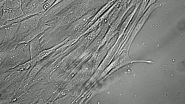(Press-News.org) The vicious cycle of diabetes describes a scenario where people are becoming fatter, often with elevated levels of glucose, and at increased risk for women to develop gestational diabetes (GDM). Intrauterine exposure to GDM, itself, is a major risk factor for later obesity and diabetes, thus perpetuating this maternal-offspring cycle of disease.
Researchers from Lund University have published an overview of evidence across the past few decades in the journal Diabetes, Metabolic Syndrome and Obesity: Targets and Therapy. They emphasize the need to update diabetes prevention guidelines that consider fetal programming events in pregnancy as part of the risk equation.
The fetal programming hypothesis hinges around the idea that the intrauterine environment, the milieu in which the fetus is exposed as it grows, impacts the trajectory for disease risk later in life.
The idea has been around for several hundred years. Da Vinci talked about this in the 1400's where the mother conveyed to her unborn child the nutritional qualities of the food that she ate. But it was really in the 1980's that the idea was picked up in a publication in a British Medical Journal, where Hales et al talked about the effects of birth weight on later diabetes risk.
"More recently research on fetal programming has been advanced by technological developments that has allowed the detailed molecular characterization of tissue samples from babies and mothers", says Paul Franks, professor of Genetic Epidemiology at Lund University and author of the review. "That is really where I would say the field is going, in terms of developing the ideas around epigenetic programming in utero, and later risks of diabetes and cardiovascular disease".
Current guidelines to prevent type 2 diabetes tend to focus on lifestyle modification and in some cases pharmacological intervention.
"This review describes the evidence showing that there are other factors that may be intervened upon much earlier in life, and serves as a precursor to upcoming work from Lund University and at the University of Copenhagen", says co-author Angela Estampador. "We will try to identify novel biomarkers that detect primordial defects arising in pregnancy or early childhood. The results of this work should help inform guidelines to substantially improve prevention of diabetes".
The relationship between an intrauterine nutrition and birth weight (a marker of fetal nutrition) and diabetes risk is U-shaped, such that offspring born to under- or over-nourished pregnancies, for example, are at a greater risk of diabetes than those born to moderately nourished pregnancies.
Therefore limiting weight gain and lowering gestational glucose concentrations, even in small amounts, will, to a point, have some beneficial impact. The point is that there's no discrete threshold; indeed, even if a mother does not have gestational diabetes, if her blood glucose concentrations are constantly elevated this appears to be harmful to her baby.
So, how much can you blame your mother for developing diseases? And what is the role of the father?
"The message should never be to blame the mother, but rather to empower her through the awareness and expansion of choice regarding possibilities in improving their child's health. There is a lack of evidence supporting epigenetic effects in human clinical trials, although there are currently several randomized controlled trials that are ongoing in the US, Europe and Australia, for example, that we discuss in this review," says Angela Estampador.
The role of the father is less clear. The researchers highlight some key studies in animal models that suggest transgenerational effects of paternal exposures on offspring health.
"This is an important area that requires further investigation, especially in human studies," Angela Estampador concludes.
INFORMATION:
Video abstract: https://www.youtube.com/watch?v=FQductHBLiY&feature=youtu.be
It means cancer "in place" but a carcinoma "in situ" often does not want to keep its place. Standing between a cancer cell in situ and the surrounding tissue of fibroblasts and extracellular matrix is the basement membrane, a thin sheet of fibers that normally cradles the cells above it. The basement membrane is also the frontline physical barrier that keeps primary tumors from spreading into the matrix below. Perforating the basement membrane is a cancer cell's first move toward invasion, but how? Fibroblasts are most commonly found in connective tissue that synthesizes ...
In the human brain, the BBB is not the Better Business Bureau but the blood brain barrier and the BBB is serious business in human physiology. The human BBB separates circulating blood from the central nervous system, thus protecting the brain from many infections and toxins. But the BBB also blocks the passage of many potentially useful drugs to the brain and it has long stymied scientists who want to learn more about this vital tissue because of the lack of realistic non-human lab models. Even less is known about the BBB in children. There are significant structural and ...
VIDEO:
This 19-second time lapse video shows the first six hours of neuronal conversion of skin fibroblasts from a patient with Alzheimer's disease.
Click here for more information.
The search for a living laboratory model of human neurons in the grip of Alzheimer's disease (AD)--the so-called "Alzheimer's in a dish"--has a new candidate. In work presented at the ASCB/IFCB meeting in Philadelphia, Håkan Toresson and colleagues at Lund University in Sweden report success ...
Location, location, location goes the old real estate proverb but cancer also responds to its neighborhood, particularly in the physical surroundings of bone marrow cells where human myeloid leukemias arise and where, according to two Harvard bioengineers, stiffness in the surrounding extracellular matrix (ECM) can predict how cancer subtypes react to chemotherapy. Correcting for the matrix effect could give oncologists a new tool for matching drugs to patients, the researchers say.
In work to be presented at the ASCB/IFCB meeting in Philadelphia, Jae-Won Shin and David ...
Alzheimer's disease (AD) progresses inside the brain in a rising storm of cellular chaos as deposits of the toxic protein, amyloid-beta (Aβ), overwhelm neurons. An apparent side effect of accumulating Aβ in neurons is the fragmentation of the Golgi apparatus, the part of the cell involved in packaging and sorting protein cargo including the precursor of Aβ. But is the destruction the Golgi a kind of collateral damage from the Aβ storm or is the loss of Golgi function itself part of the driving force behind Alzheimer's? This was the question for Yanzhuang ...
VIDEO:
Nucleoli (green), small liquid-like nuclear bodies, are kept small and afloat by a fine actin mesh. When the mesh breaks, the nucleoli quickly being to fall and coalesce into larger...
Click here for more information.
Everybody knows that cells are microscopic, but why? Why aren't cells bigger? The average animal cell is 10 microns across and the traditional explanation has been cells are the perfect size because if they were any bigger it would be difficult to get enough ...
Cells are restless. They move during embryogenesis, tissue repair, regeneration, chemotaxis. Even in disease, tumor metastasis, cells get around. To do this, they have to keep reorganizing their cytoskeleton, removing pieces from one end of a microtubule and adding them to the front, like a railroad with a limited supply of tracks. The EB family of proteins helps regulate this process and can act as a scaffold for other proteins involved in pushing the microtubule chain forward.
Still, how these EB proteins function in space and time has remained a mystery. Now Peng ...
The antioxidant activity of citrus juices and other foods is undervalued. A new technique developed by researchers from the University of Granada for measuring this property generates values that are ten times higher than those indicated by current analysis methods. The results suggest that tables on the antioxidant capacities of food products that dieticians and health authorities use must be revised.
Orange juice and juices from other citrus fruits are considered healthy due to their high content of antioxidants, which help to reduce harmful free radicals in our body, ...
Penicillin, the wonder drug discovered in 1928, works in ways that are still mysterious almost a century later. One of the oldest and most widely used antibiotics, it attacks enzymes that build the bacterial cell wall, a mesh that surrounds the bacterial membrane and gives the cells their integrity and shape. Once that wall is breached, bacteria die -- allowing us to recover from infection.
That would be the end of the story, if resistance to penicillin and other antibiotics hadn't emerged over recent decades as a serious threat to human health. While scientists continue ...
Physicians often ask their patients to "Please stick out your tongue". The tongue can betray signs of illness, which combined with other symptoms such as a cough, fever, presence of jaundice, headache or bowel habits, can help the physician offer a diagnosis. For people in remote areas who do not have ready access to a physician, a new diagnostic system is reported in the International Journal of Biomedical Engineering and Technology that works to combine the soft inputs of described symptoms with a digital analysis of an image of the patient's tongue.
Karthik Ramamurthy ...


